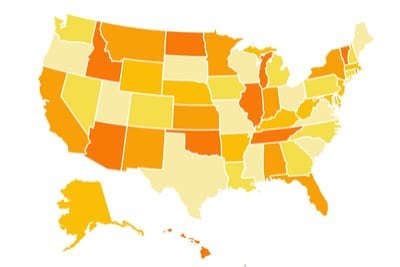Student teaching and completion of an exam like the Praxis are required for licensure. Completing a portfolio is also required; this is an equally important but lesser-known step to becoming a teacher. All teachers must complete a teaching portfolio before they gain their license. And in fact, some teachers may need to complete more than one teaching portfolio.
A teaching portfolio is a collection of files that demonstrate your ability to teach. The files in your teaching portfolio are often called artifacts. Artifacts include teaching materials you’ve created, lesson plans you’ve written, copies of feedback that you’ve given to students, videos of your teaching, and other direct records of your teaching experience.
Other artifacts in your teaching portfolio don’t record your teaching activities quite as directly—most portfolios also include your own writings about your teaching. In your portfolio, you may wind up writing descriptions of the groups of students you work with, or reflections on your teaching experiences. Generally, these personal writings will accompany the “authentic” records of your teaching. You may write a description of your students to go with your teaching materials and lesson plans, write a reflection on the class session that you videotaped, and so on.
Who looks at your teaching portfolio?
You’ll need to submit a teaching portfolio directly to your state’s teacher licensing agency. In some cases, your portfolio will be reviewed by assessors from your state’s department of education. In other cases, the state hires a private company to accept and review your teaching portfolio. The main company that does this right now is Pearson. Pearson reviews and grades teacher portfolios through its EdTPA assessment service.
If you’re getting your license through a traditional teaching degree program at a university, your professors will probably also review your teaching portfolio before you turn it in to the state licensing board. Professors are there to give you guidance and feedback and help make sure that you turn in a portfolio that will be accepted by the state and earn you your license.
In some cases, teacher education programs themselves will ask you to complete a teaching portfolio as part of a class. These graded portfolios are usually shorter than the one you need to complete to get your license, with a narrower focus related to whatever class you’re taking. So if you’re studying to become—say—an ESL teacher—you might take one course on reading pedagogy, creating a portfolio in which the materials relate to teaching English reading skills to non-native English speakers.
What to include in your teaching portfolio
Every state office of education publishes different guidelines and requirements for its teacher portfolios. Some artifacts will deal with general pedagogy, but there will also be plenty of artifacts that are very specific to the content are you’re getting licensed in—required materials that specifically relate to special education, language arts, science, math, etc…
To know for certain what needs to go into your portfolio, contact your academic adviser or directly consult your state’s board of education. Sometimes checking with your state will require an email or a phone call. But often a state board of education publishes portfolio requirements for each content area license on the web… or links directly to a third party portfolio review website such as Pearson EdTPA.




